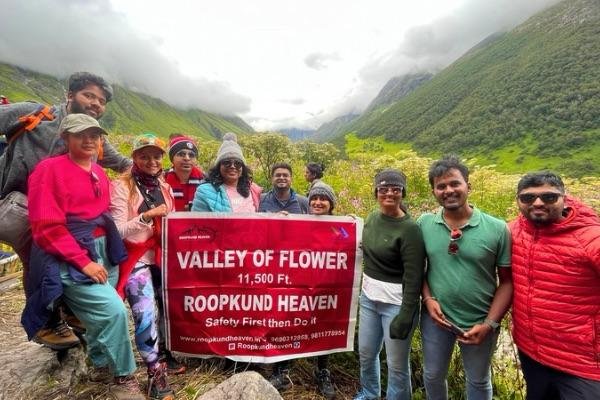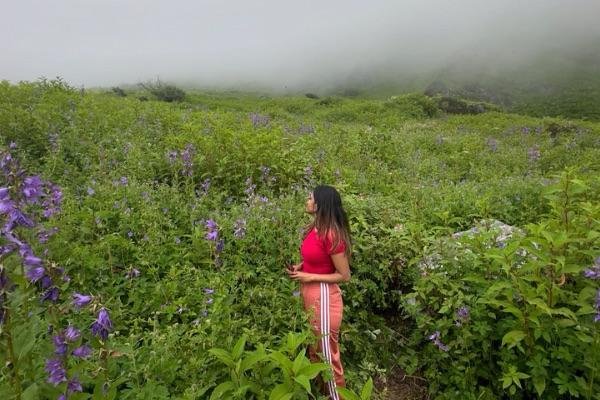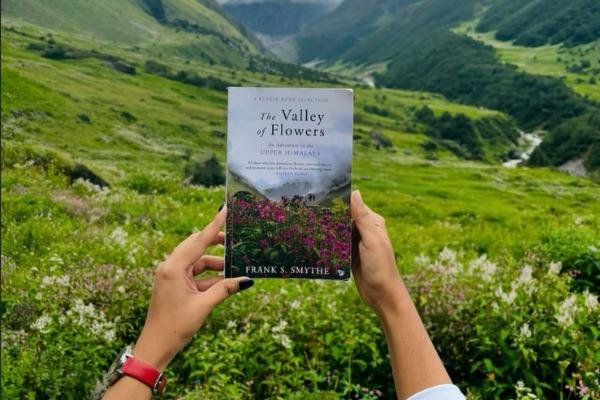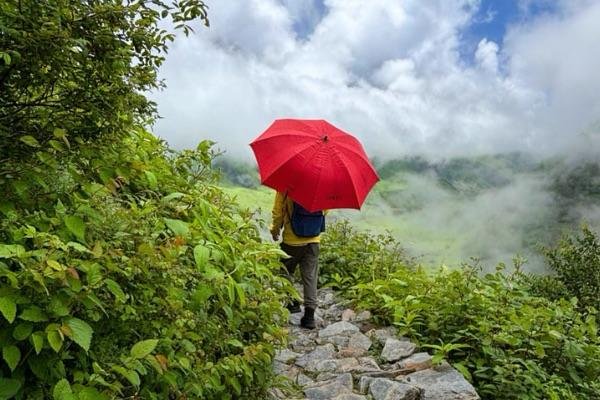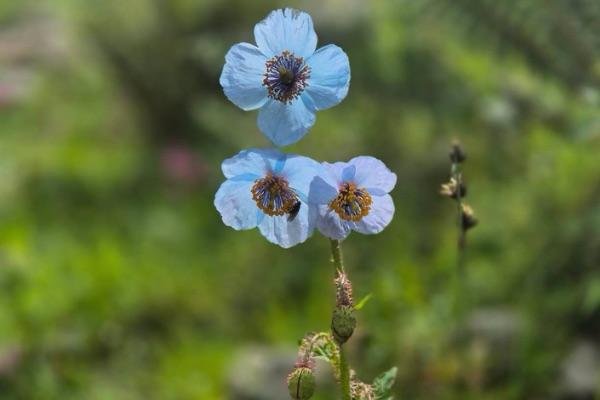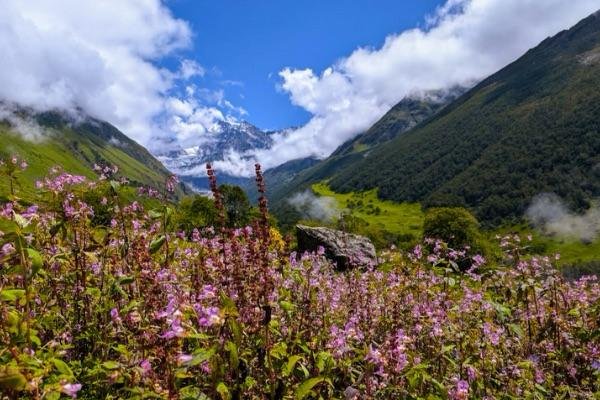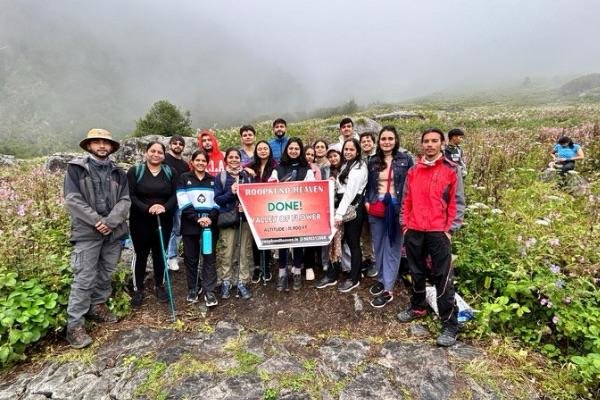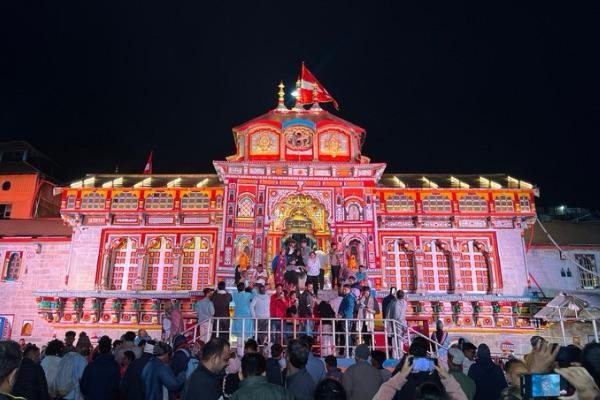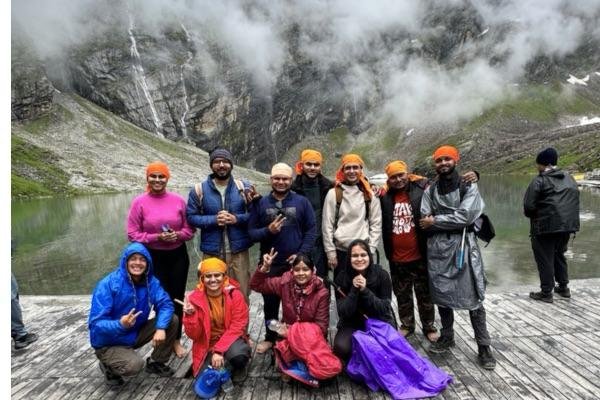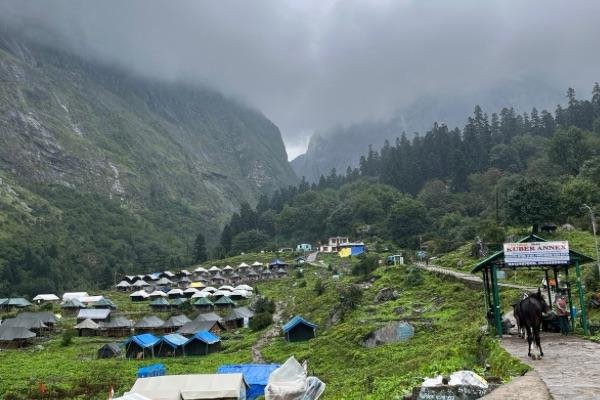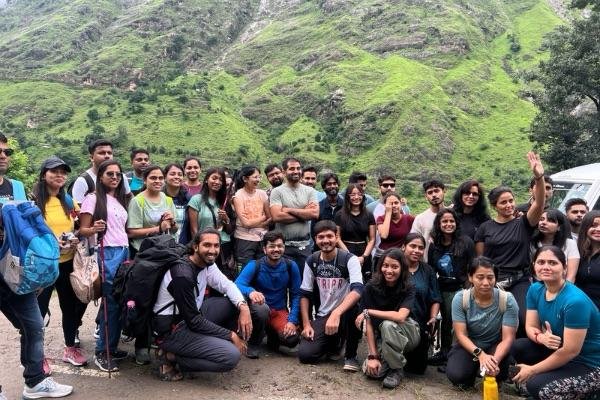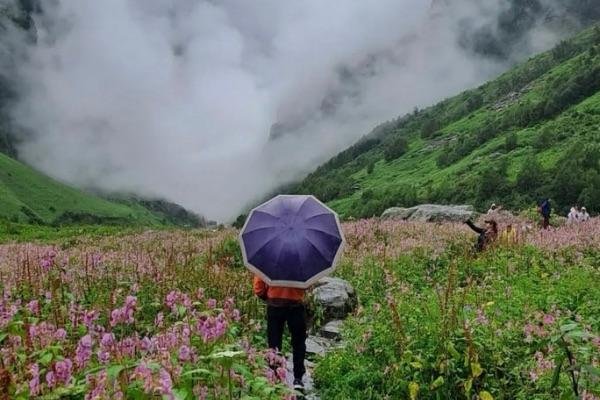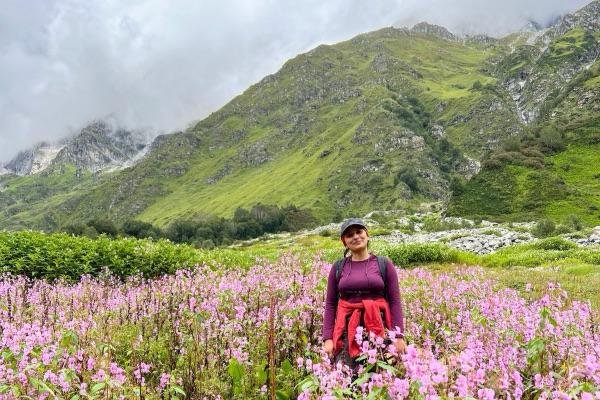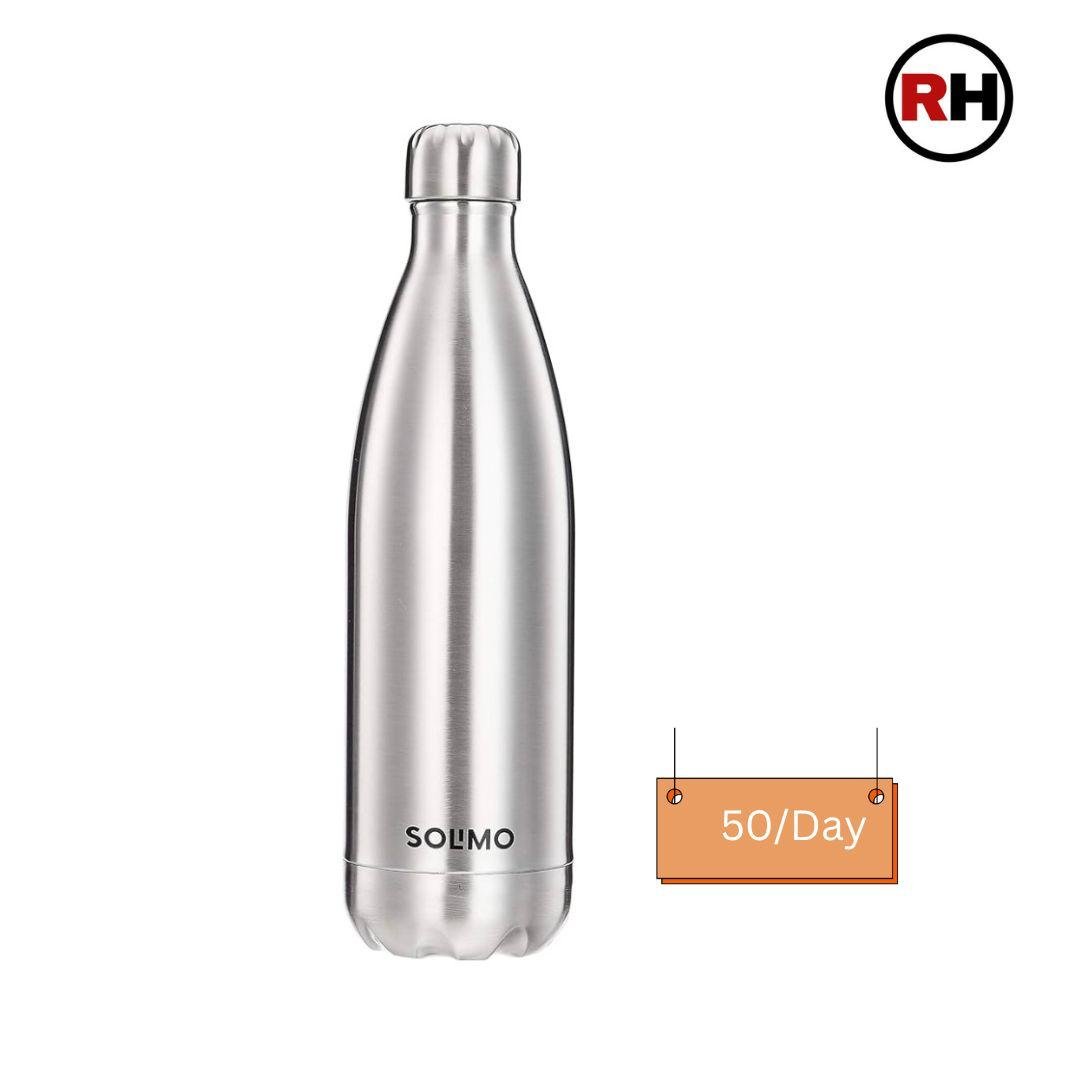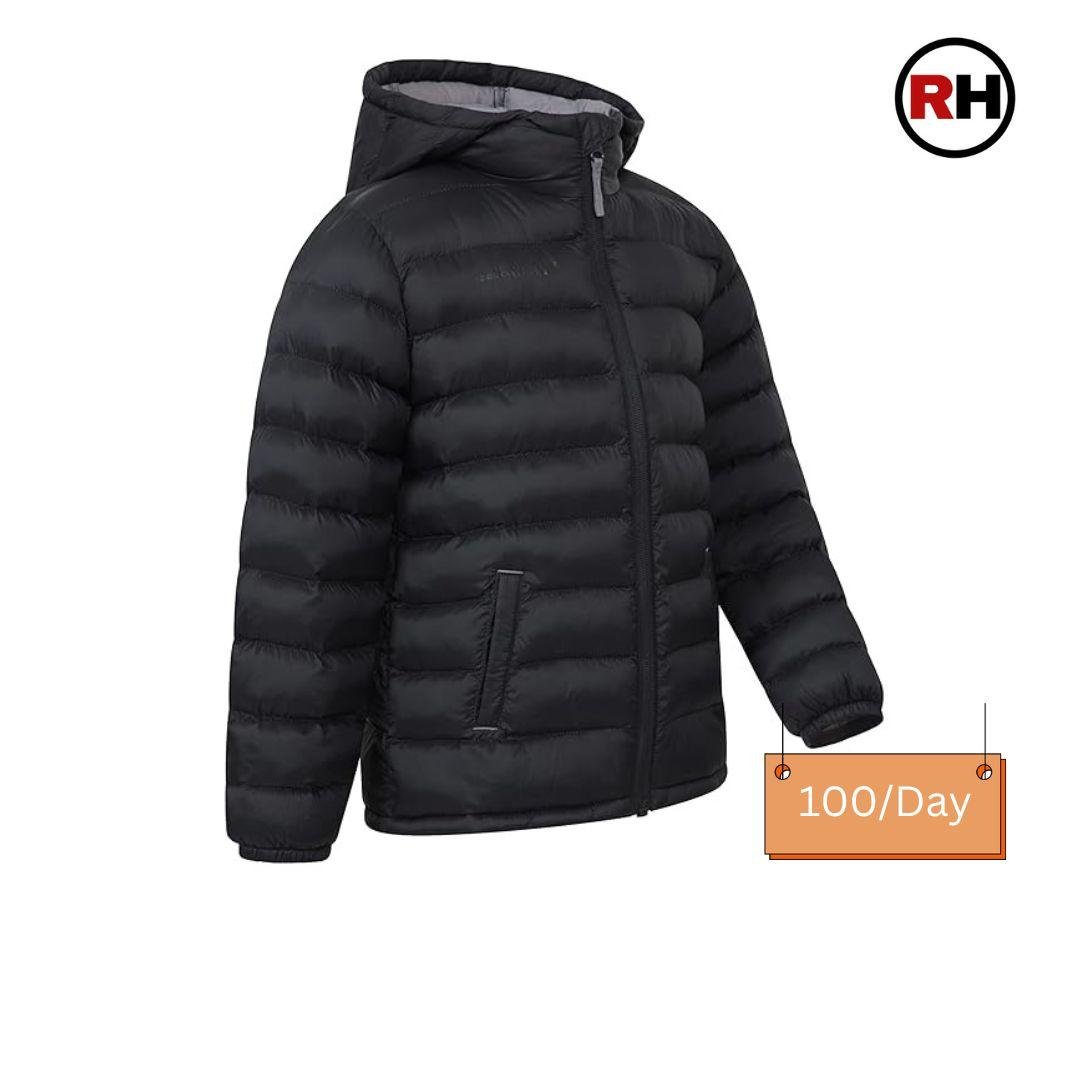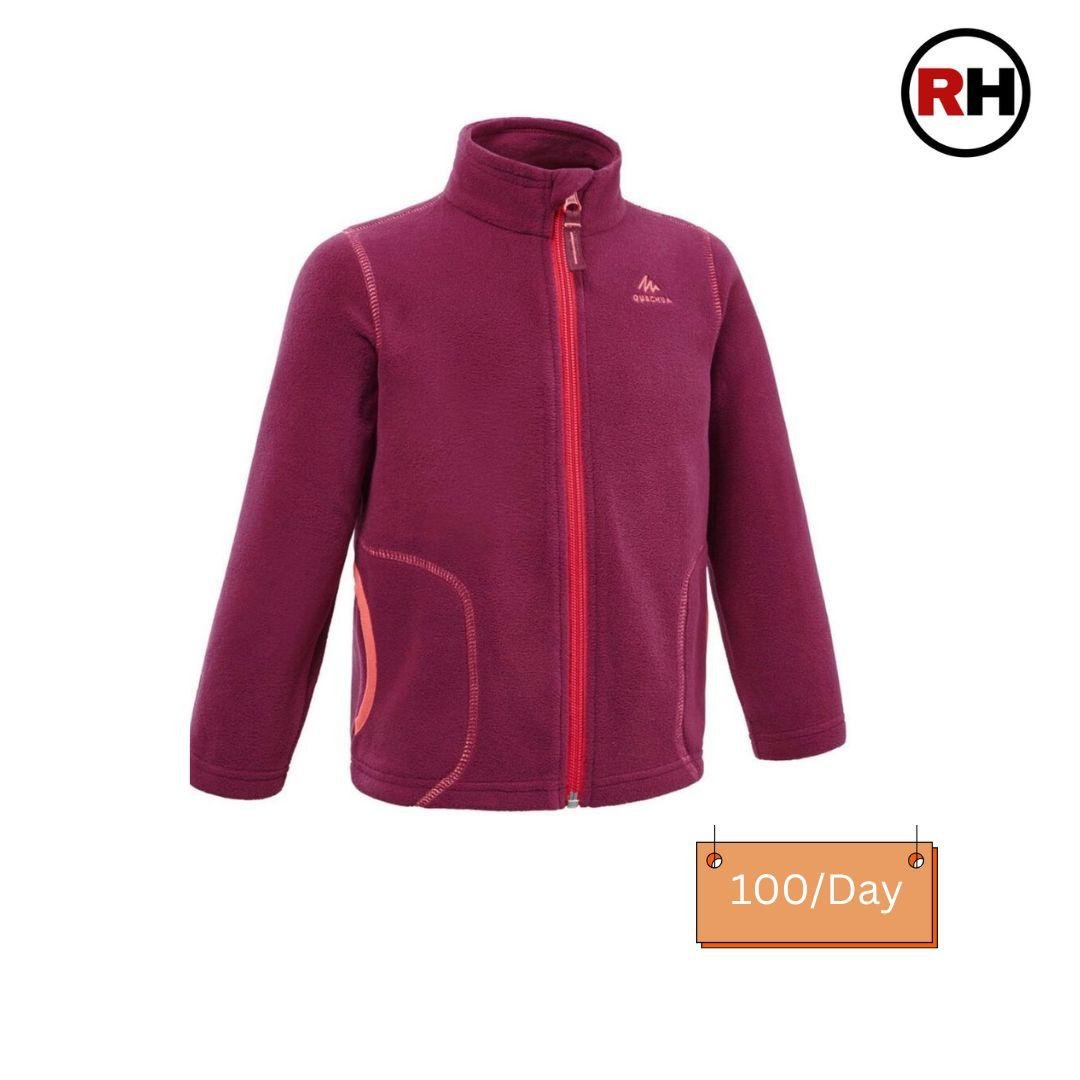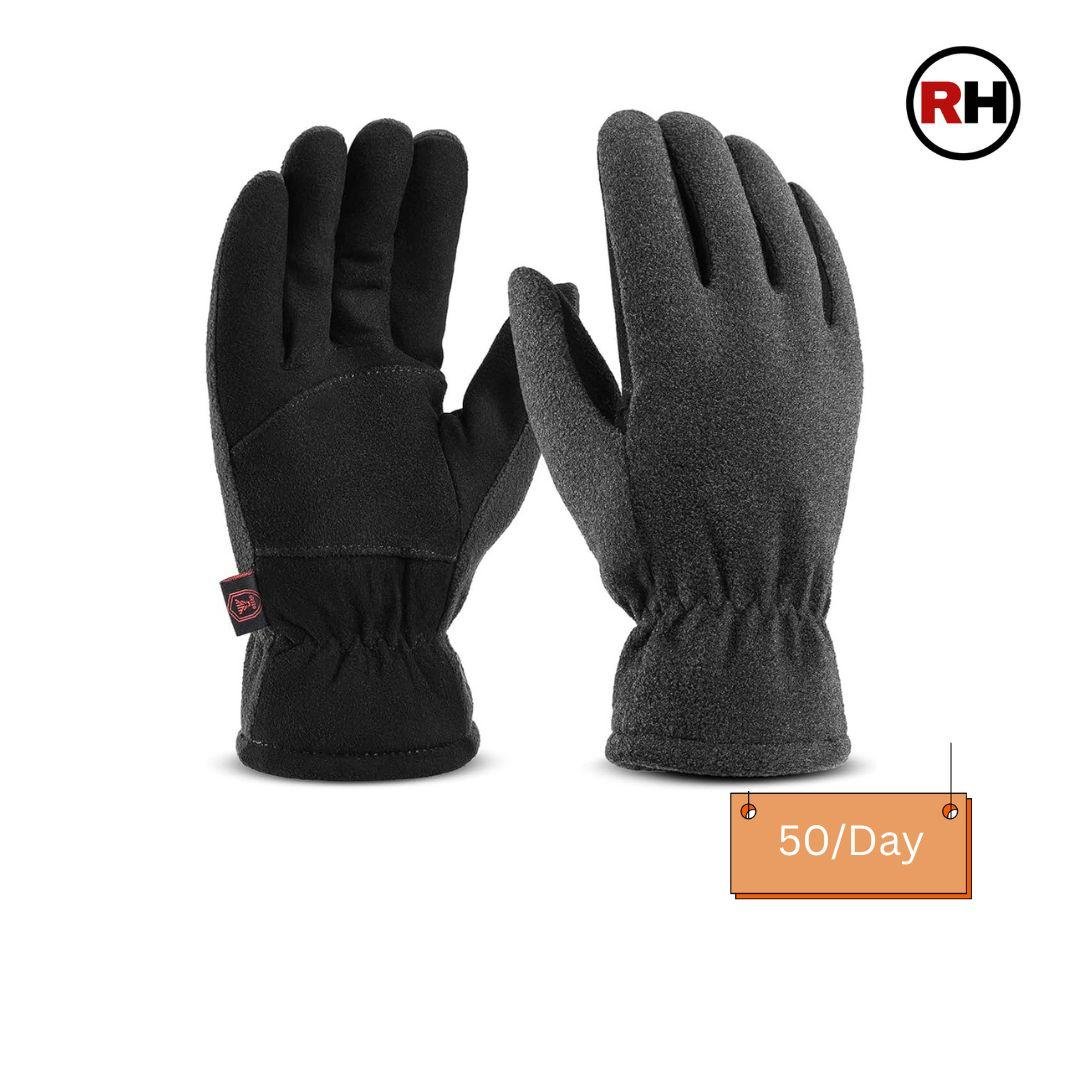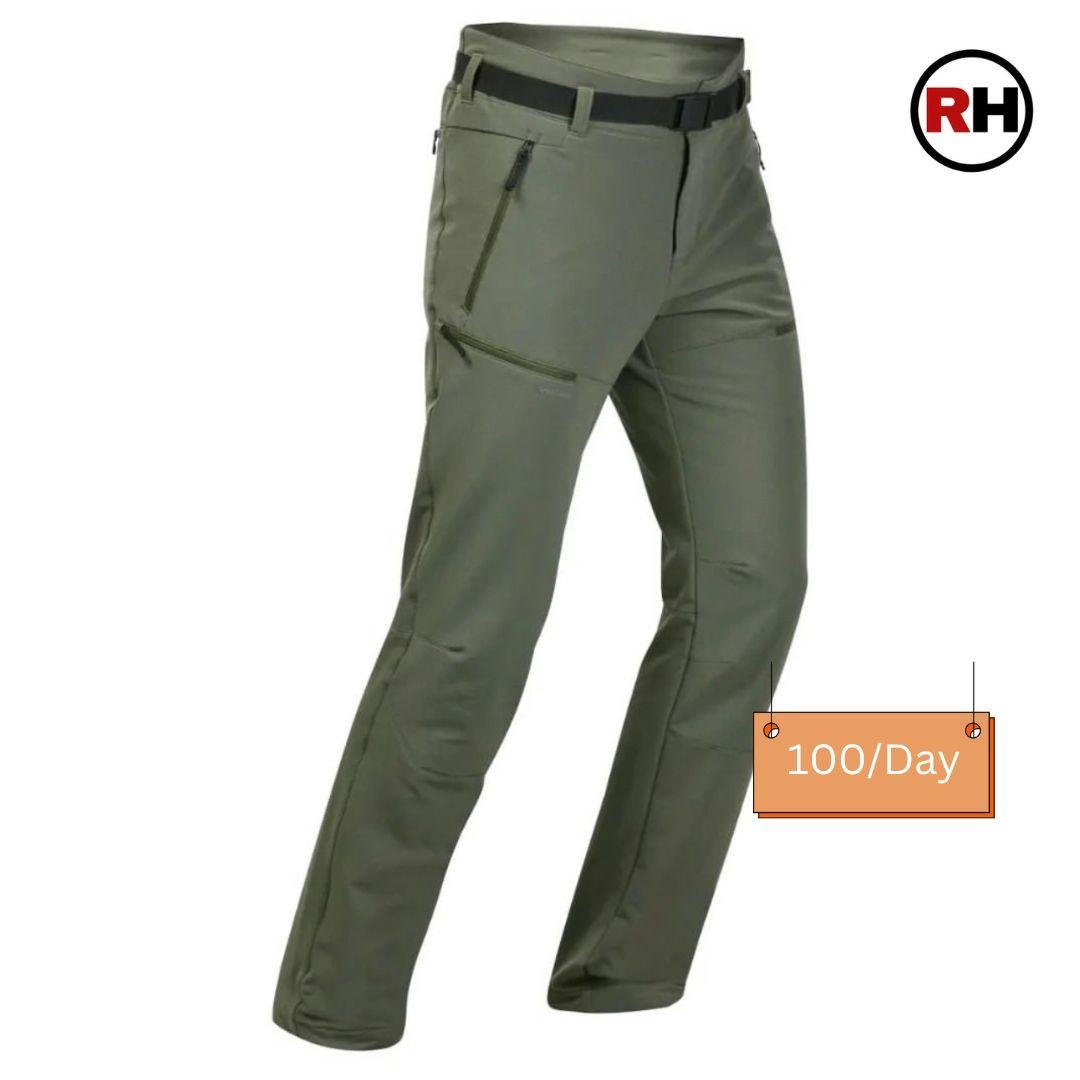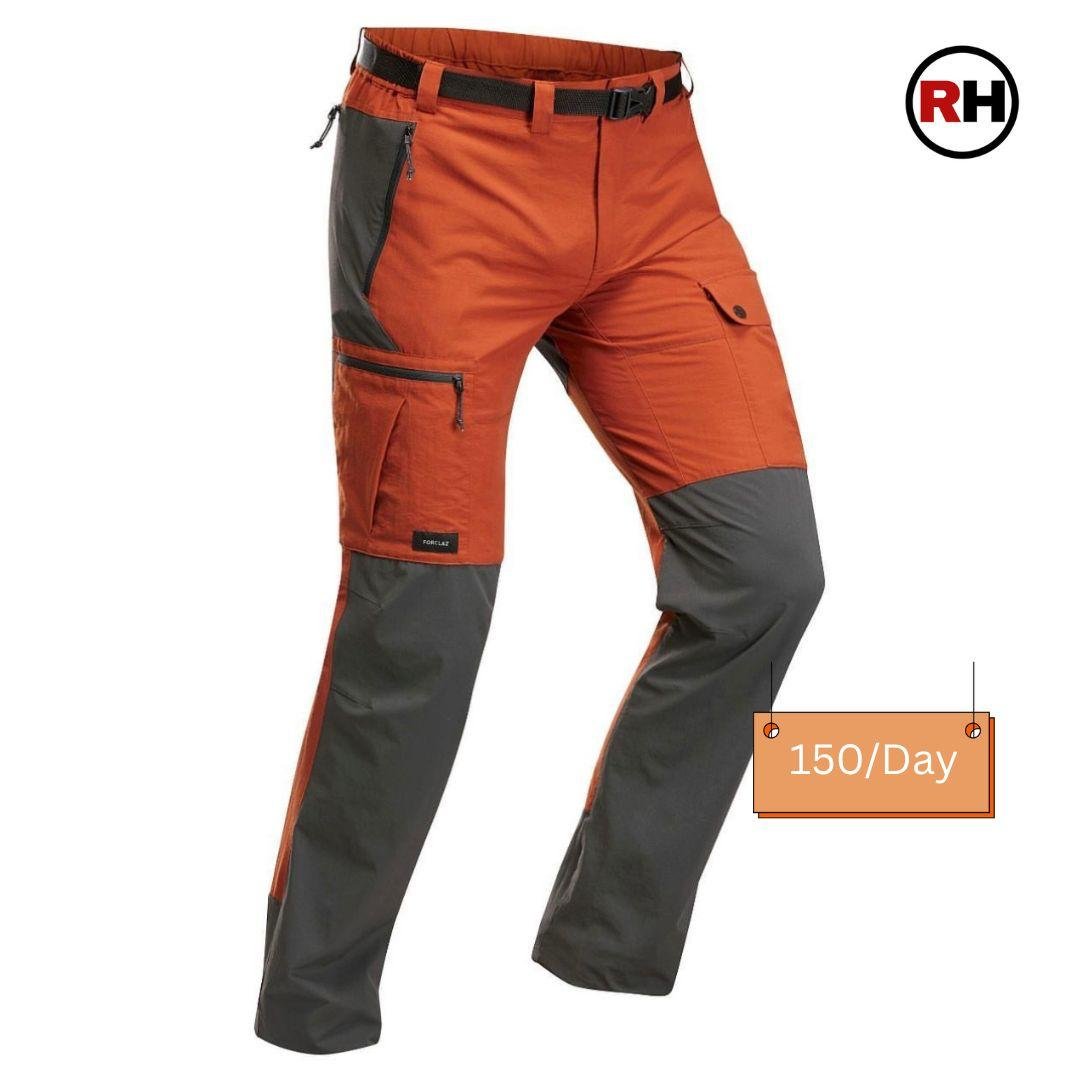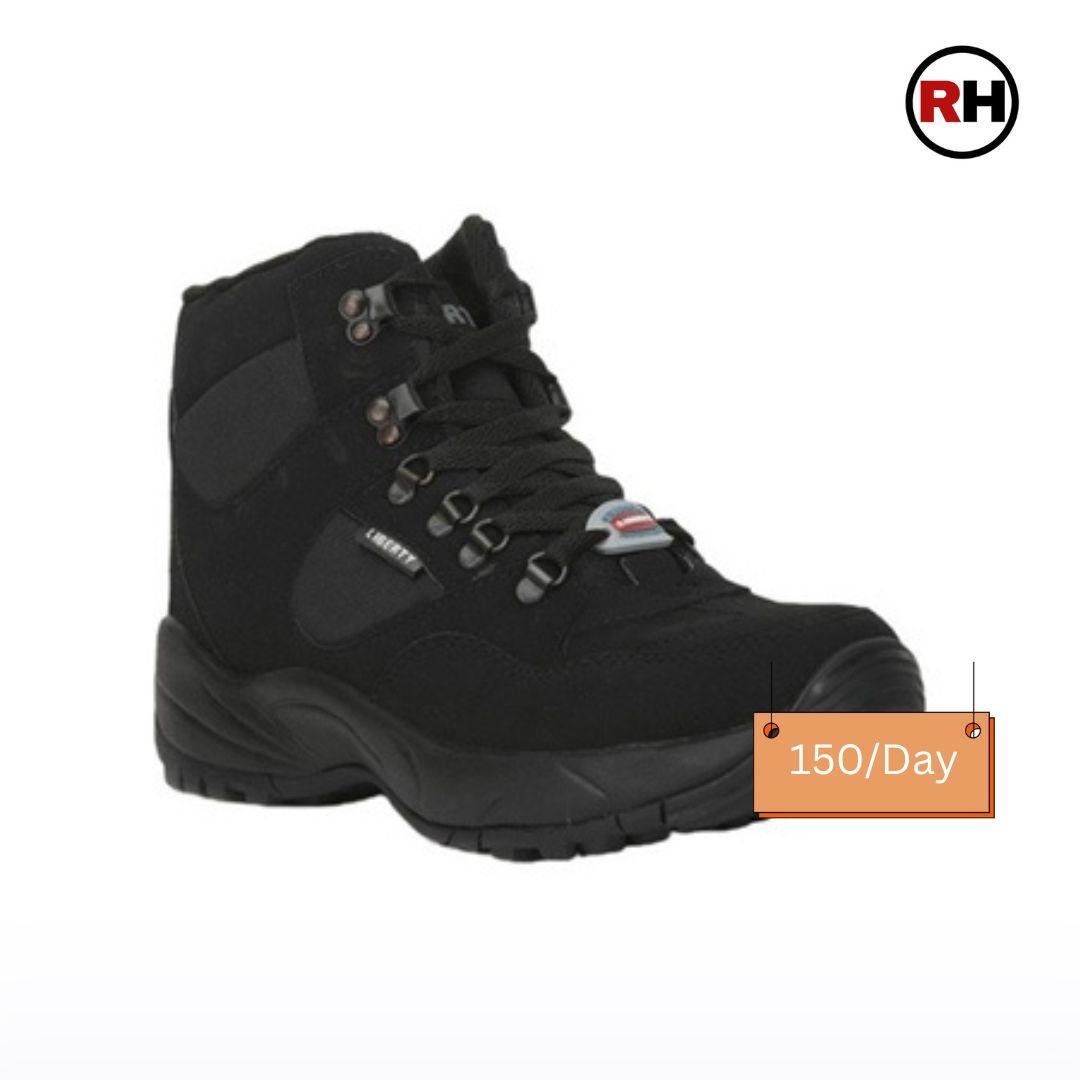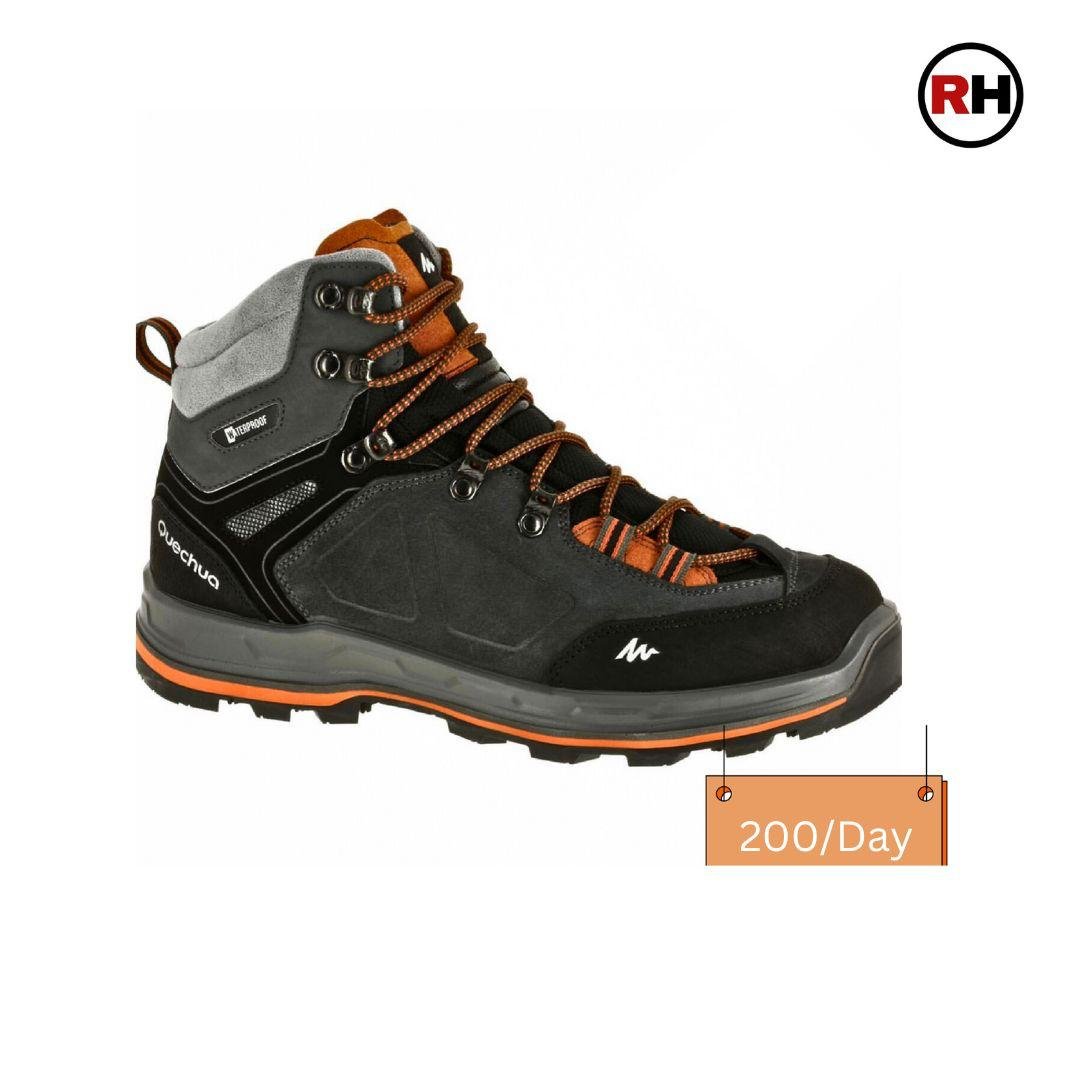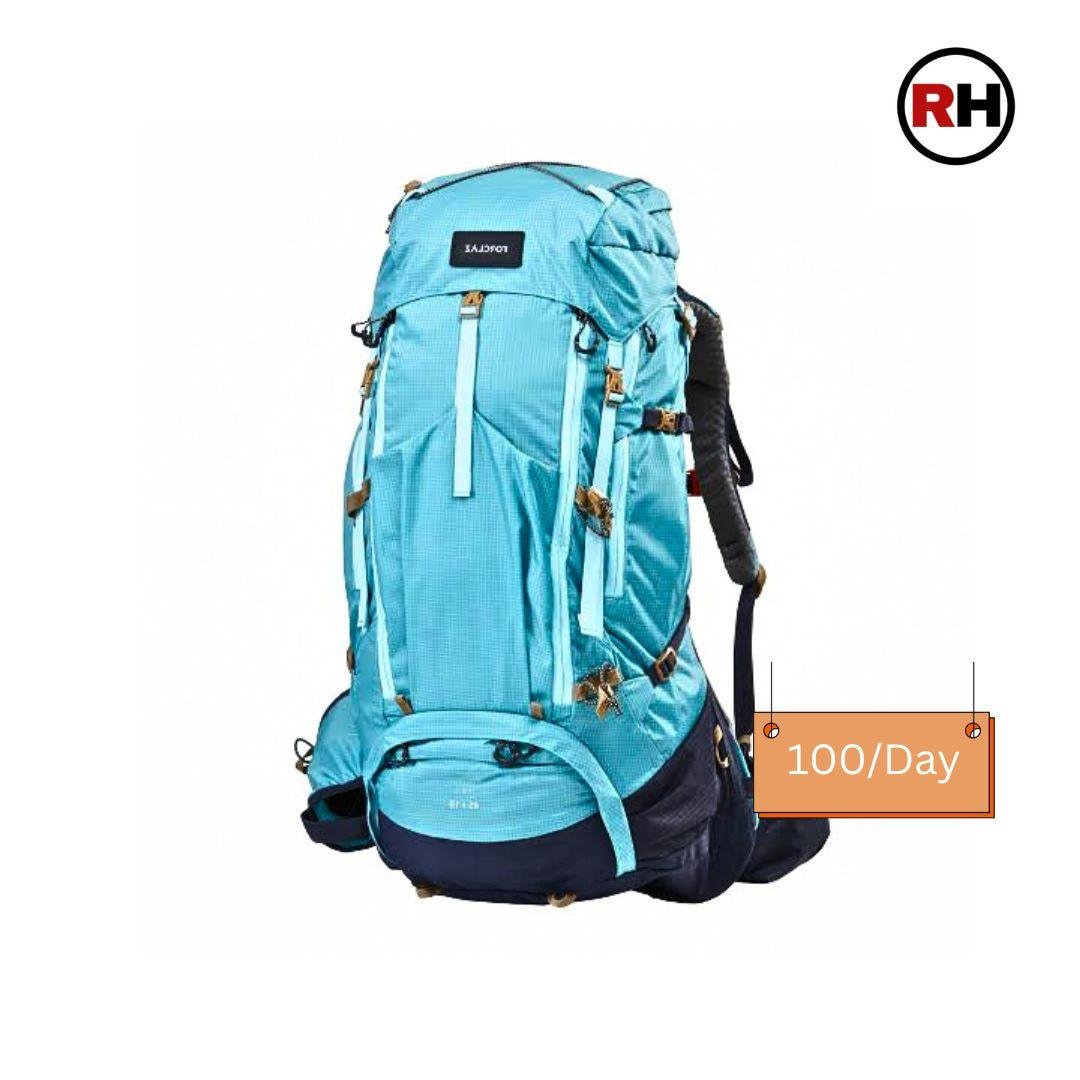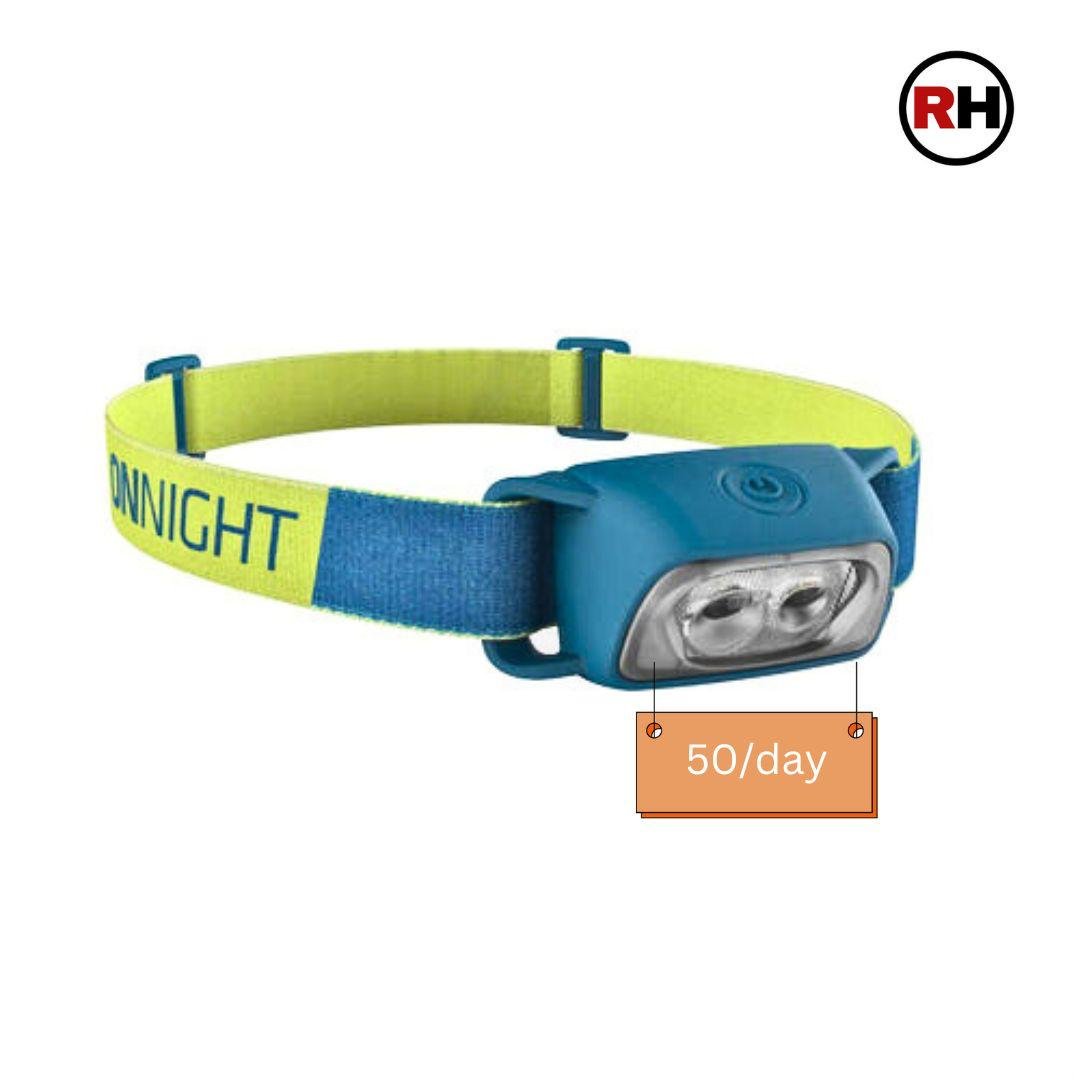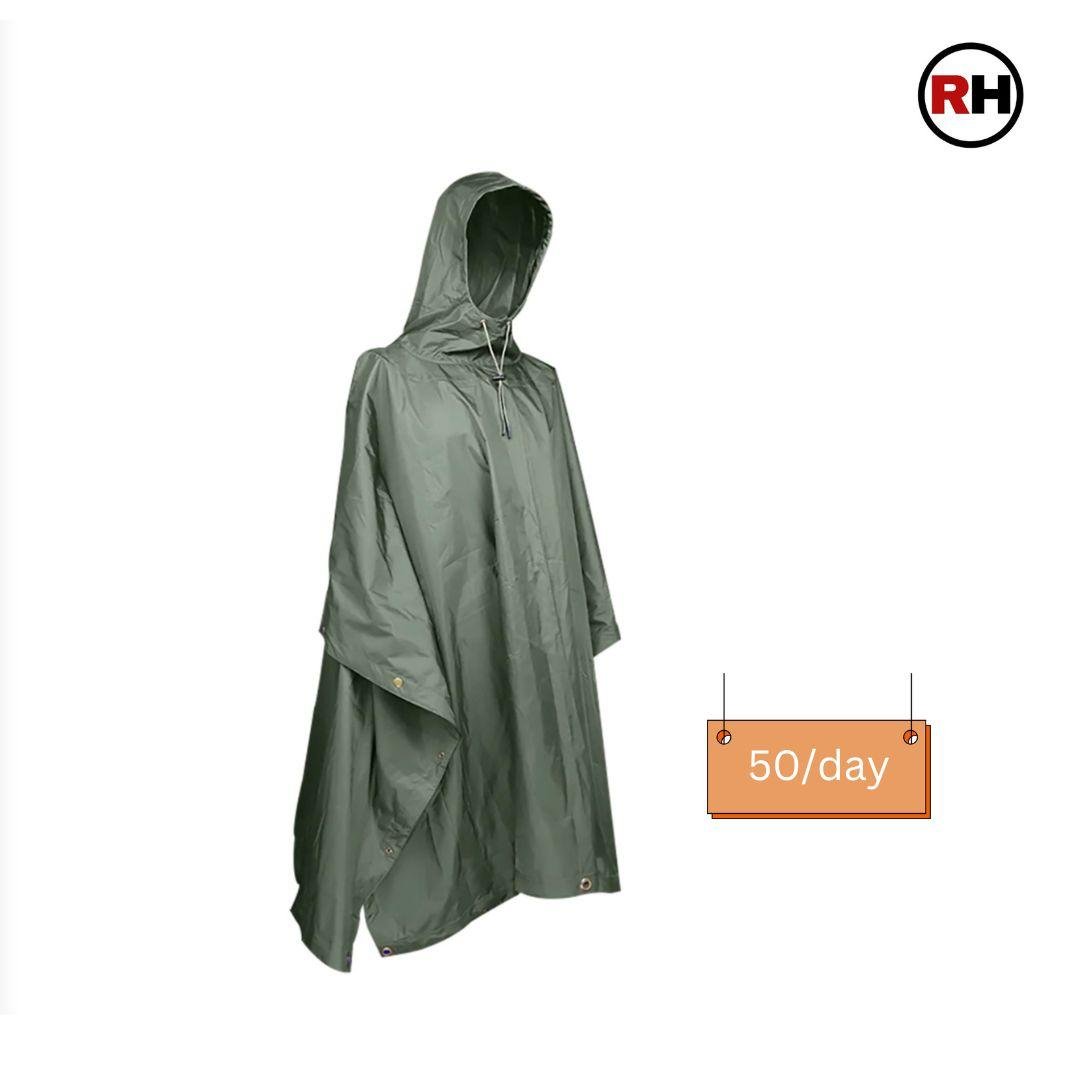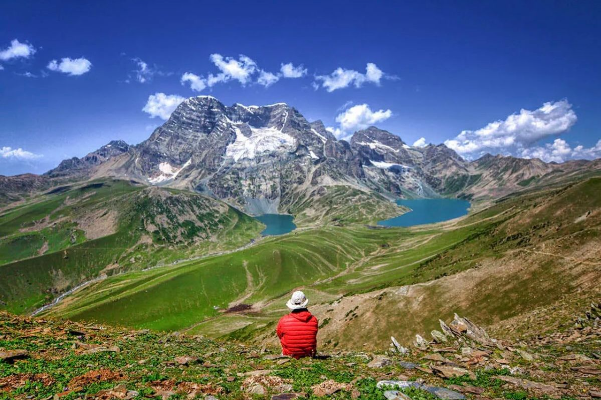VALLEY OF FLOWERS TREK, UTTARAKHAND
Valley of Flowers with Nanda Devi National Park and Hemkund Sahib Trek in Uttarakhand
Trek Grade
Moderate
Highest Altitute
14,200 ft/4328 m
Best Season
july -aug-mid sep
Trek Duration
5 Night | 6 Days
Trekking Km
38 Km
Stays
Hotel
transport
Rishikiesh-Rishikiesh
trek region
Uttarakhand
Base camp
Joshimath
Meals
veg meal/egg
Trek Grade
Easy to Moderate
Highest Altitute
14,200 ft/ 4328m
Trek Duration
5 Night | 6 Days
Base camp
Joshimath
Meals
veg meal/egg
Stays
Hotel
transport
Rishikesh
trek region
Uttarakhand
Trekking Km
38 Km
Trek Grade
Easy to Moderate
Highest Altitute
15,000 feet
Base camp
Rishikesh
Trek Duration
3D | 2N
Stays
Meals
transport
activities
How to Reach
Trek Grade
Trek Grade
Trek Grade
Trek Grade
Trek Grade
Valley of Flowers with Hemkund Sahib Trek Overview
Embark on an unforgettable journey through the enchanting Valley of Flowers and Hemkund Sahib Trek in uttarakhand with Roopkund Heaven. Escape the monotony of daily life and immerse yourself in the tranquility of nature amidst the majestic Himalayas. This trek promises a kaleidoscope of vibrant colors against the backdrop of snow-capped peaks, making it an experience of a lifetime.
Words like “backpackers bliss” and “photographer’s pleasure” fail to capture the true essence of this valley’s allure. Nestled in the Garhwal Himalayas, it stands as one of the world’s premier trekking destinations. At an altitude of 14,100 ft. above sea level, the Valley of Flowers Uttarakhand Trek has earned recognition as a UNESCO World Heritage Site.
Valley of Flowers in winter months, the valley lies dormant under a blanket of snow, only to burst into life with the arrival of summer, showcasing a stunning array of blossoms. As an integral part of the Nanda Devi National Park Biosphere Reserve, it draws visitors from across the globe from June to September. Here, a myriad of flowers in various hues and shapes adorn the landscape, creating a spectacle of natural beauty.
But the valley offers more than just floral delights. As you trek, be prepared to encounter rare species such as blue sheep and red foxes amidst breathtaking vistas of cascading streams and verdant pastures. The Valley of Flowers Trek is a sanctuary for both the soul and the senses, where every step unveils a new wonder of nature.
Valley of Flowers Trek Highlights
- The Valley of Flowers National Park is renowned for its breathtaking natural beauty and is designated as a UNESCO World Heritage Site. Located in the Garhwal Himalayas, it sits at an altitude of 14,100 ft. above sea level.
- During the summer months, the valley bursts into a kaleidoscope of colors as the snow melts, showcasingdiverse range of vibrant flowers.
- Its meandering trails offer visitors a sensory feast amidst lush greenery and towering peaks.
- The valley is home to a wide variety of flora, including rare and endangered species, making it a botanical marvel.
- Wildlife enthusiasts can also spot rare species such as blue sheep, red foxes, and numerous bird species.
- The Valley of Flowers Uttarakhand Trek is a testament to the unparalleled splendor of nature captivating all who are fortunate enough to explore its beauty.
Valley of Flowers with hemkund Sahib Trek Itinerary
Day 1 Rishikesh to Joshimath
(250 km Drive, 9-10 hrs approx)
Rishikesh to Joshimath
(250 km Drive, 9-10 hrs approx)- Stay : Overnight stay at the Guest House in Joshimath
- Meal : Tea snacks, Dinner.
- Altitude : Joshimath (6150 ft)
- Distance : By Road 250 kms
- Time Taken : By Road 9-10 hrs approx.
- Trek Grade : By Road
Our adventure together commences right in the heart of Rishikesh, where we’ll set off on an awe–inspiring journey along the renowned Badrinath Road. Though the drive to Pipalkoti spans a substantial 9 hours, fear not, for the captivating vistas that unfold along the way will keep you utterly engaged and enthralled from start to finish.
As we gradually ascend, the ever–majestic river that accompanies us on this journey will steadily transform, its once serene waters evolving into a turbulent and spellbinding spectacle.
Prepare to be enchanted as we traverse through four of the five sacred confluences of the Ganga-Devprayag, Rudraprayag, Karnaprag, and Nand Prayag–each offering an abundance of opportunities for both photography and profound, unforget -table experiences.
So, with eager anticipation, keep those eyes peeled and your cameras poised to capture every ounce of the divine beauty that awaits us on this remarkable pilgrimage.
Day 2 Josimath to Poolna, Poolna to Ghangaria
(24 km Drive) (9 km trek 6-7 hrs)
Josimath to Poolna, Poolna to Ghangaria
(24 km Drive) (9 km trek 6-7 hrs)- Stay: Overnight stay at the Guest House in Ghangaria
- Meal: breakfast, packed lunch, evening tea snacks, soup and dinner.
- Altitude: Ghangarial (10,003 ft), Joshimath (6150 ft)
- Distance: By Trek 9 kms. By Road 24 kms
- Time Taken: By Trek 6-7 hrs approx., By Road 1 hr
- Trek Grade: Gradual
Our journey kicks off post-breakfast, aiming to reach Govindghat by 8 am, marking the start of our adventure with a short 4 km drive to Pulna, our initial destination.
Today’s travel expenses are already covered, so you can focus solely on soaking in the experience. The 9 km uphill trek, which runs parallel to the mesmerizing Pushpawati River, is bustling with fellow travelers, ensuring you’re never alone on this exhilarating path.
And fret not about hunger pangs along the way, fornumerous snack shops dotting the trail offer a variety of beverages, piping hot noodles, omelets with bread, parathas, and other savory treats to keep you energized.
As you ascend, a well-defined path of stone and stairs guides your footsteps, ensuring a safe and straightforward journey. Upon traversing 5 km, you’ll arrive at the charming village of Bhyundar, treating yourself to breathtakingviews of Hathi Parvat. Take a moment to savor this picturesque sight, knowing that the real uphill challenge awaits beyond.
By nightfall, we’ll find ourselves nestled in Ghangaria, having conquered an elevation of 10,000 feet. Rest assured, comfortable accommodation awaits us at a cozy guesthouse, offering a well-deserved respite after a day filled with adventure and exploration.
Day 3 Explore Valley of Flowers National Park
(4+4 km Trek , 6-7 hrs approx)
Explore Valley of Flowers National Park
(4+4 km Trek , 6-7 hrs approx)- Stay: Overnight stay at the Guest House in Ghangaria
- Meal: breakfast, packed lunch, evening snacks, shup and dinner.
- Altitude: Valley of Flower(14,100 ft), Ghangaria (10,003 ft).
- Distance: By Trek 8 km (both side)
- Time Taken: By Trek 6-7 hrs approx.
- Trek Grade: Gradual
Wake up early and have breakfast by 7:00 AM. Day 3 promises an exciting trek from Ghangaria to the valley of flowers national park and back. Get ready for unforgettable views of this dreamlike destination, away from the city’s chaos. The trek covers about 4 km to reach the valley, which stretches for 6-7 km. The distance you cover within the valley depends on your preference and stamina.
After 30 minutes, you’ll pass a forest check post, with the Laxman waterfall just before it. Another highlight is the wooden bridge over the Pushpavati river, offering a picturesque scene. The trail, similar to previous days, is steep and stone-paved. Inside the valley, you’ll encounter bridges and landslide areas amidst the serene ambiance of chirping birds and flowing water.
The Valley of Flowers Uttarakhand Trek boasts stunning views and unique flora like blue poppy, Himalayan rose, and more. After a 5 km stretch, colorful blossoms give way to a glacier. Don’t miss the chance to relax by the Pushpavati River, offering breathtaking natural vistas.
Weather permitting, catch glimpses of Himalayan peaks like Gauri Parbat and Nilgiri Parvat. Before sunset, we’ll trek back to Ghangaria for a delicious dinner to end the day on a satisfying note.
Day 4 Hemkund sahib trek
(6+6 km Trek 6-7 hr approx)
Hemkund sahib trek
(6+6 km Trek 6-7 hr approx)- Stay: Overnight stay at the Guest House in Ghangaria
- Meal: breakfast, packed lunch, snaks, soup and dinner.
- Altitude: Hemkund Sahib (15000 ft), Ghangaria (10,003 ft).
- Distance: By Trek 6 kms (one side)
- Time Taken: By Trek 7-8 hrs approx.
- Trek Grade: Steep
In the early hours of the morning, fueled by a hearty breakfast, we’ll commence our trek towards the revered Hemkund Sahib, a sacred shrine nestled amidst alpine heights and above the tree line. The trail, well-trodden and wide, caters to pilgrims from all corners of the globe seeking divine blessings.
En route from Ghangaria to Hemkund Sahib Trek, you’ll encounter several tea stalls and dhabas, offering refreshment to weary travelers. As the altitude approaches 4000m, the trail becomes adorned with abundant blooms of the Brahma Kamal, a sight to behold. The ascent, though moderate, is continuous, requiring approximately 3 to 4 hours to reach the revered shrine.
Hemkund Sahib holds profound significance for Sikhs worldwide, being revered as the highest gurudwara globally, perched at an elevation of 4,329 meters. The mist-shrouded lake, particularly enchanting during the monsoon, offers a serene ambiance. Take a moment to relish the tranquility of the surroundings and savor a cup of tea, lovingly served by the Gurudwara committee.
Nestled amidst snow-clad peaks and a serene lake, Hemkund Sahib Trek provides a captivating vista of this mystical locale. During clear skies, marvel at the perfect imprints of the imposing Saptrishi peaks mirrored on the lake’s surface. Fed by the melting ice masses from Saptrishi tops and Hathi Parvat, the lake is meticulously preserved. Adjacent to the lake lies the serene Laxman sanctuary, adding to the allure of the area.
Surrounded by breathtaking scenery, including vibrant blooms of Brahma Kamal, blue poppy and Vajradanti, the Hemkund Sahib area is a visual feast for the senses. As weather conditions can change swiftly, we’ll commence our return journey to Ghangaria by evening, where a sumptuous and piping-hot meal awaits. Prepare to indulge in this unforgettable experience, cherisi-ng the memories created amidst the awe-inspiring beauty of Hemkund Sahib.
Day 5 By Road Ghangaria to Poolna, By Trek Poolna to Joshimath
(9 km trek 5-6 hrs) (24 km Drive)
By Road Ghangaria to Poolna, By Trek Poolna to Joshimath
(9 km trek 5-6 hrs) (24 km Drive)- Stay: Overnight stay at the Hotel in Joshimath
- Meal: breakfast, packed lunch, snaks, soup and dinner.
- Altitude: Joshimath (6150 ft).
- Distance: By Trek 9 km. By Road 24 kms
- Time Taken: By Trek 6–7 hrs approx., By Road 1 hr
- Trek Grade: Steep
Following a hearty breakfast, we begin our descent towards Govindghat, eventually driving back to Joshimath. From there, Badrinath is just 25 km away, a scenic hour-long journey.Weather and road conditions permitting, we may even make a stop at Badrinath to explore its renowned beauty.
Day 5 sees us retracing our steps from Ghangaria to Govindghat, this time with the trek offering a fresh perspective on nature’s wonders. Upon reaching Govindghat, the possibility of continuing on to Badrinath hinges on favorable weather and road conditions.
The journey to Badrinath treats us to breathtaking views of cascading waterfalls and themajestic river. However, it’s crucial to note that the route from Govindghat to Badrinath is susceptible to landslides during the monsoon season. In such cases, the safety of our trekkers is paramount. Should our trek leaders deem the conditions unsafe, we’ll opt for a direct return to Pipalkoti. Arriving in Pipalkoti by evening or night, we’ll arrange
accommodation in a comfortable guesthouse for the night.
Day 6 Joshimath to Rishikesh
(250 km Drive, 9-10 hrs approx)
Joshimath to Rishikesh
(250 km Drive, 9-10 hrs approx)- Meal: Tea/cookies
- Distance: By Drive 250km
- Time Taken: By Road 9-10 hrs approx.
- Trek Grade: Gradual
As we bid farewell to this memorable journey, let’s ensure we savor every moment of our last day. Our departure from Joshimath will be bright and early at 6 AM, embarking on a scenic drive back to Rishikesh. With an anticipated arrival time between 6 to 7 PM, we’ll have ample opportunities to relish the breathtaking landscapes and reminisce about our adventures along the route.
En route, let’s take advantage of the journey to indulge in hearty breakfast and lunch, each a chance to partake in local delicacies and flavors, albeit at our own expense. As we wind through the picturesque roads, framed by towering peaks and cascading rivers, let’s soak in the tranquility and beauty of the Himalayas, cherishing every passing moment as we bid adieu to this enchanting expedition.
- Stay is included on all days of the trek (from Joshimath to Joshimath). You will be staying in Hotel on a Triple/quard sharing basis.
- Transport charges from Rishikesh to Joshimath and return.
- All meals from dinner at Joshimath on Day 1 and to tea cookies on Day 6 are included. Meals are simple, nutritious and vegetarian.
- First aid medical kits, oxygen cylinder and stretcher.
- All fuel charges, toll taxes and needed forest entry fees along with permits.
- Mountaineering qualified and professional trek leader, guide, cook and support staff.
- GST 5% (it is Mandatory)
- Any emergency evacuation charges
- Any services that are not mentioned in the cost inclusion section.
- Any Meals/accommodation beside the itinerary or not mentioned in the program.
- Mules or porters to carry personal luggage.
Best Time to Visit Valley of Flowers Trek
- The valley is cloaked in lush greenery, with the first blooms of flowers emerging.
- The pinnacle of the flowering season blossoms post-mid-July, treating visitors to a vibrant array of colors.
- Remnants of old snow bridges and melting patches of snow dot the landscape.
- Rainfall intensifies following mid-July, through the valley remains relatively uncrowded during this period.
- The initial fortnight of August unveils a profusion of blossoms, creating a breathtaking spectacle.
- While Govindghat experiences notable rainfall, higher elevations encounter milder precipitation.
- Weekends witness a surge in visitors, leading to crowds, while weekdays offer a more serene trekking experience
- By this month, the flowers begin to wither, yet the valley swells with the presence of pilgrims.
- While the peak bloom season has passed, the valley retains its allure.
- September sees an increase in foot traffic due to pilgrimages and other visitors.
How to Reach Valley of Flowers From Delhi?
- By Bus: From Delhi, a regular bus service operates to Rishikesh. The main bus station in Delhi is ISBT Kashmere Gate, offering both AC and non-AC buses for the journey to Rishikesh.
- By Train: To reach Rishikesh from Delhi by train, you’ll first need to travel to Haridwar. From there, you can take a bus to Rishikesh, which is 35 km away. Haridwar serves as a major railway junction connecting Delhi to Rishikesh.
- By Air: The closest airport to reach Rishikesh by flight is Jolly Grant Airport, located approximately 25 km from the city. Regular flights from Delhi to Rishikesh are available. If you plan to arrive by flight, it’s advisable to schedule your arrival one day in advance.
- Rishikesh is the perfect spot to start if you’re planning to,Trek the Valley of Flowers or visit nearby spiritual sites.
What To Pack Before going Valley of Flowers, Uttarakhand?
As a trekking, adventure, and travel company, we often receive inquiries from our trekkers, and one of the most frequent questions is about what to Pack Before going the valley of Flowers trek. Sometimes, it can be challenging to provide detailed explanations, so we’ve compiled a comprehensive packing list that will be beneficial for all trekkers heading to the Himalayas. When preparing for a trek and organizing your gear, it’s helpful to follow a systematic approach. You can start either from head to foot or foot to head, ensuring you cover all essentials and minimize the risk of forgetting important items. So, take it step by step and pack accordingly.
Footwear and Backpack
✅Trekking shoes with ankle support
✅Backpack with rain cover
✅Daypack with rain cover
Warm Layers and Clothing
✅Warm layers (Padded jackets )
✅3 layers for spring, summer, and monsoon treks (1 woolen sweater, 1 fleece, 1 padded jacket)
✅4 layers for autumn treks (1 woolen sweater, 2 fleece, 1 padded jacket)
✅5 layers for winter treks (1 pair of thermals, 1 woolen sweater, 2 fleece, 1 padded jacket)
✅3 Collared T-shirts (Wear one, carry two)
✅2 quick-dry trek pants (Wear one, carry one)
Accessories
✅Sunglasses
✅Sun cap, preferably with flaps
✅Waterproof gloves
✅Balaclava
✅Woolen socks (2-3 pairs od Dry + 1 pair of Woolen))
✅Headlamp
✅Trekking pole
✅Rain Jacket + pants/poncho
Toiletries
✅Suncreen
✅Moisturizer
✅Light towel
✅Lip balm or vaseline
✅Toilet paper (wet wipes are strictly not allowed on our treks)
✅Toothbrush
✅Toothpaste
✅Reusable plastic covers (for used clothes)
✅Trash bags (Carry out all your waste and leave no trace behind)
FAQs About Valley of Flowers Trek
Get all your questions answered here related to valley of flowers trek
When is the best time to do the Valley of Flowers Trek?
The best time to do the Valley of flower Trek is July to mid-September offers the best window of opportunity to experience the Valley of Flower National Park Trek with favorable weather conditions, stunning landscapes, and safer trekking conditions. During this time, the weather is generally pleasant and favorable for trekking. Days are mostly sunny with clear skies, and temperatures range from mild to moderately cool, making it comfortable for Trekking. Roads leading to the base camp of the trek are generally accessible during this time, facilitating easier travel to and from the starting point of the trek.
Is prior trekking experience required for the Valley of Flowers Trek?
While prior trekking experience is not mandatory, it is recommended to have a basic level of fitness and stamina. The Valley of Flowers Uttarakhand Trek is considered an easy to moderate trek, making it suitable for beginners. With proper preparation, guidance, and a positive mindset, even first-time trekkers can comfortably complete the journey and enjoy the breathtaking beauty of the valley.
How difficult is the Valley of Flowers Trek?
The Valley of Flowers Trek is generally considered easy to moderate in terms of difficulty. It doesn’t involve technical climbing, but trekkers should be prepared for long walks, gradual ascents, and occasional steep sections, especially on the way to Hemkund Sahib Trek. The trail can be tiring due to the altitude and changing weather, but it remains manageable for most people with basic fitness. With proper preparation, even beginners can comfortably complete the trek and enjoy the stunning scenery.
What is the duration and how long is the Valley of Flowers Trek?
The Valley of Flowers Trek typically takes around 5 to 6 days to complete, including travel time to and from the base location (usually Rishikesh or Haridwar), as well as the trekking days. The actual trekking distance is approximately 38 to 40 kilometers, spread over several days. The trek includes walking from Govindghat to Ghangaria, and day hikes to the Valley of Flowers and Hemkund Sahib. The trail passes through scenic landscapes, including alpine forests, rivers, and vast flower-filled meadows, reaching a maximum altitude of around 14,100 feet (4,300 meters) at Hemkund Sahib.
Will there be electricity at the campsites on the trek?
Unlike some high-altitude treks that involve camping, the Valley of Flowers Trek includes stays in hotels or guesthouses at locations like Govindghat, Ghangaria, and Joshimath. These accommodations typically have electricity, so you will have the option to charge your phone or camera batteries each day. However, occasional power outages can happen in remote areas, so it’s still a good idea to carry a power bank or spare batteries as a backup.
Is Valley of Flowers Trek safe?
The Valley of Flowers National Park Trek is renowned for its safety and accessibility, particularly during the window from mid-June to mid-September, when the region is in full bloom and ideal for trekking. It stands out as one of the safest high-altitude treks in India. While there are a few mildly challenging sections along the trail, such as occasional steep ascents and slippery paths during rains, the overall terrain is manageable and poses minimal risks.
Is a mobile network available on the Valley of Flowers Trek?
While on the Valley of Flowers Trek, mobile network connectivity is limited. You may get some signal in Govindghat and Ghangaria, depending on your service provider—BSNL tends to have the most coverage in the region. However, once you enter the valley or head towards Hemkund Sahib, the network is usually unavailable. It’s a good idea to inform your family and friends in advance about the limited connectivity. Sharing the contact details of your trek coordinator can also help ensure important updates are communicated when needed.
Valley of Flowers trek package
Joshimath to Joshimath
Add ons
Total: ₹
Dates & Availability








